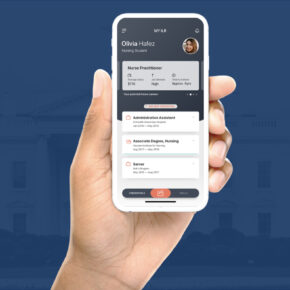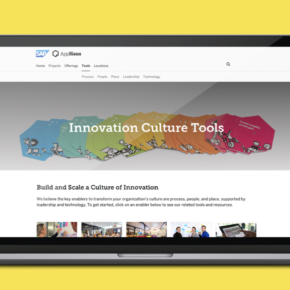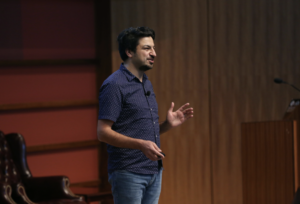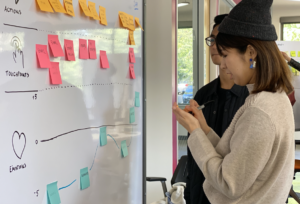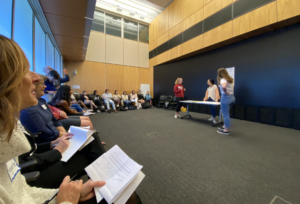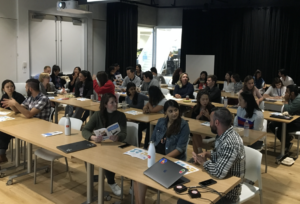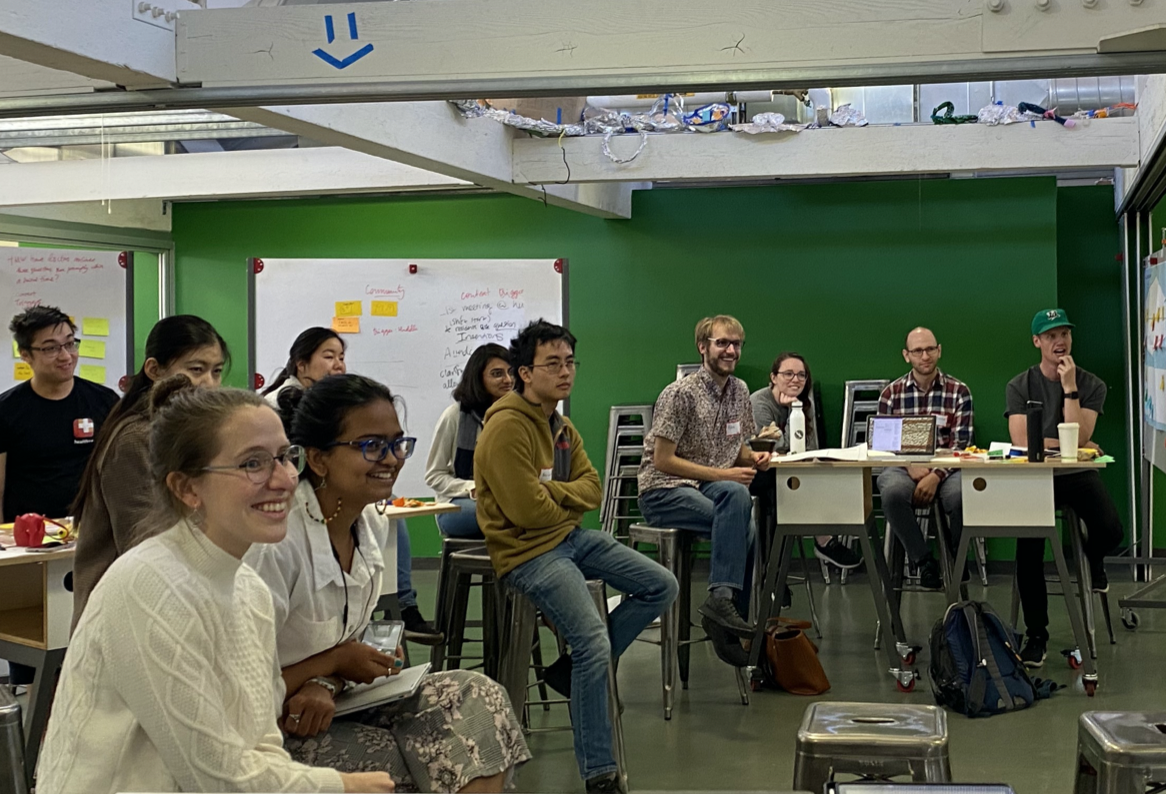
On February 20-22, 2020, Ted Matthews, Kajal Khanna and I led a Stanford d.school class on Ritual Design for Better Workplaces. It’s a continuation of our other ritual design work and research, done within our Ritual Design Lab.
Ritual Design Lab has run many iterations of workplace ritual design workshops with partner organizations including Microsoft, Airbnb, SAP Labs, OneTable, and Norwegian Football Association, and now we shifted our focus on the challenges of burn-out in the workplace.
The class was a 3-day partnership with Kajal Khanna, an Assistant Professor in the Department of Emergency Medicine at Stanford University focused on physician well-being; and Assoc. Professor Ted Matthews, who is the Chair of Service Design at Oslo School of Architecture & Design and who’s research focuses on the potential of ritual for service design.
Can we design rituals to help emergency room employees improve their well-being in nimble yet effective ways?
Background on the challenge
The numbers around healthcare professionals’ well-being are alarming. 50 percent of doctors and nurses experience symptoms of burnout. The symptoms can include exhaustion, cynicism, and perception of inefficacy. The factors for burn-out are several, including work overload, pressure from various healthcare stakeholders(hospital admins, peers, insurance companies, patients), and stress. What are some of the ramifications of burn-out? Doctors and nurses who experience burnout are twice more likely to quit their jobs and even the medical profession. Female physicians are 250–400% more likely to commit suicide than other female professionals.
There’s a growing concern among physicians that objects to the narrative around individuals’ ‘burnout’ without addressing the bigger challenges. Simon Talbot and Wendy Dean suggest the concept of ‘moral injury’ instead. Moral injury happens when physicians’ and nurses’ values do not match the realities of everyday healthcare practice. And these may be related to systemic and structural challenges in the healthcare system.
Tackling systemic and structural challenges would require alignment from a wide array of healthcare system stakeholders and a longer engagement with the emergency room practitioners. Given our constraints, we decided to keep our scope tight, focused on daily interactions and relationships.
Discovery & Insights
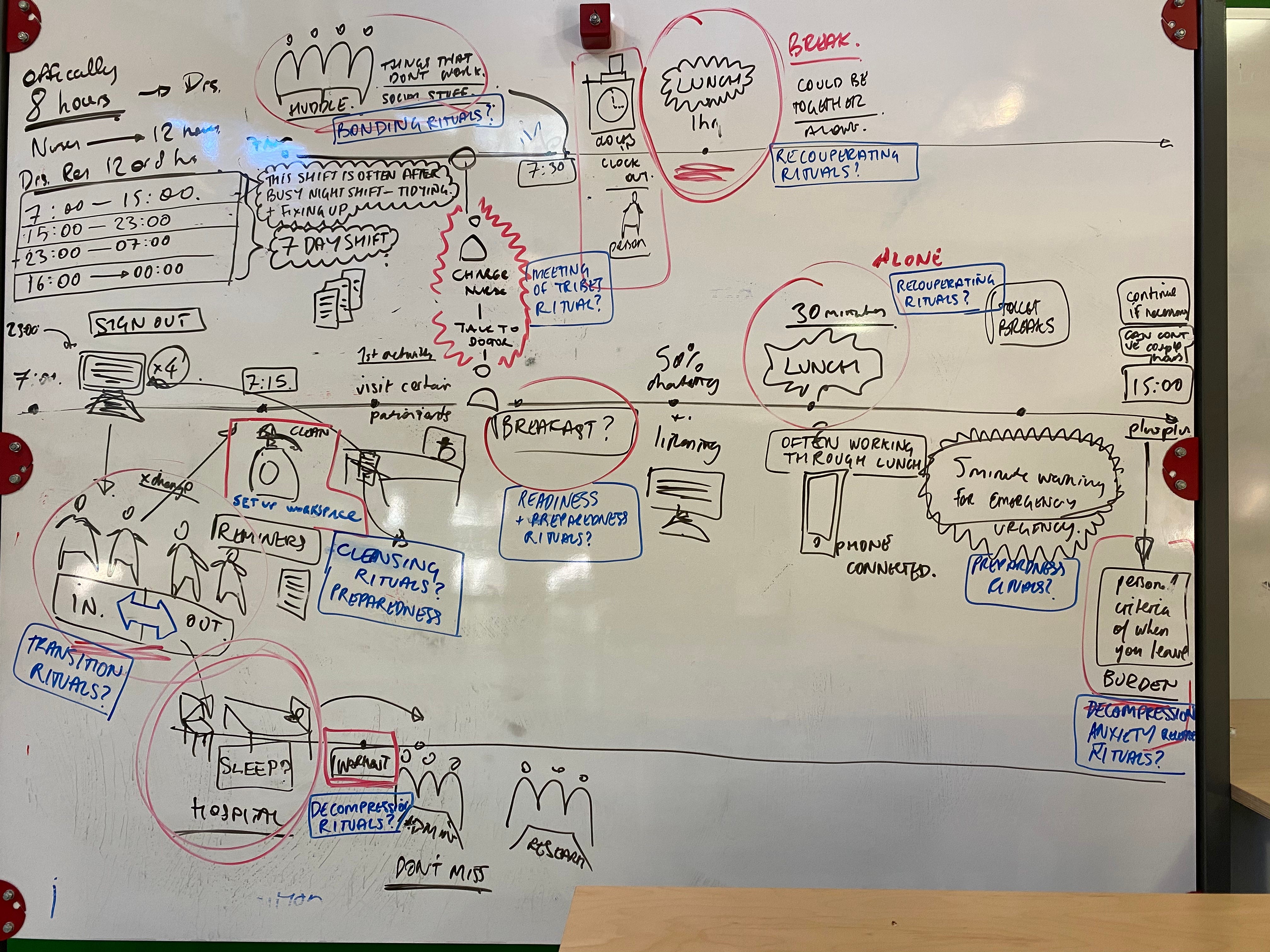
We did several interviews prior to and during the class and discovered several insights on the current experience threads among the care team members.
- In the emergency room, every day can be quite different. This makes routines highly vulnerable. For instance, the team in charge usually gets a 5-minute warning when an ambulance is on its way. The people in the shift can be quite different too. There are residents on rotation, nurses who are only temporarily working with the department and consultants who visit as needed.
- As we map the day-in-the-life of physicians and nurses, we discovered that shift changes, hand-offs, and other transition moments cause anxiety and emotional distress.
- Daily interactions can feel a bit mechanical. There’s an ongoing pressure to maximize time and complete the charting (adding patient data on the system.) This in return decreases the quality time interactions between members of the team and between the team members and the patients. This is supported by data.
- There’s a strong warrior mindset among healthcare professionals. They get through the hardships and long hours, because they are educated in that way, and can stretch themselves even though it drains them in the long run.
- People are bonded by the nature of the work — namely helping people in their healing journey. This bond is interrupted by time pressure and communication challenges. This poses challenges around psychological safety.
5 Well-being Rituals
Students formed teams and created 5 rituals by leveraging the insights from their discovery. They developed their concepts using ritual canvases that borrow ideas from ritual studies. For example, students craft their rituals by creating a trigger moment, intention, and ritual flow. They articulate their ritual concepts by thinking of emotional payoff, symbols, and a ritual arc. They then drew storyboards and acted out their rituals for feedback and refinement. In the end, they created ritual video sketches for the final show. Here are their rituals:
Blitz Ritual for Psychological Safety

When residents are part of the team, there is an untold anxiety among them: “Should I already know this question? Am I a bad resident for not-knowing this?” To overcome this anxiety, the team created a post-huddle ritual. The questions can be related to anything. Questions about medical knowledge that’s usually taken granted by the senior doctors are more helpful.
Ed-Blitz Ritual Flow
- Residents and anyone in the team can write questions anonymously on post-its and add to the Ed-Blitz question board.
- When there is enough volume of questions, the senior physician and residents get together and answer questions on the post-its.
- Board has two sections. The first section is questions for the attending doctor. The second section is open mic — whoever knows the answer can take the lead.
- Once they answer the question, they wrinkle the post-it and shoot a basketball.
- When the board is empty, the attending doctor gives more post-its to the group to encourage more questions.
- When the basket is full, residents take them to the recycling together to mark the moment.
Chime in Ritual for Living by Your Values
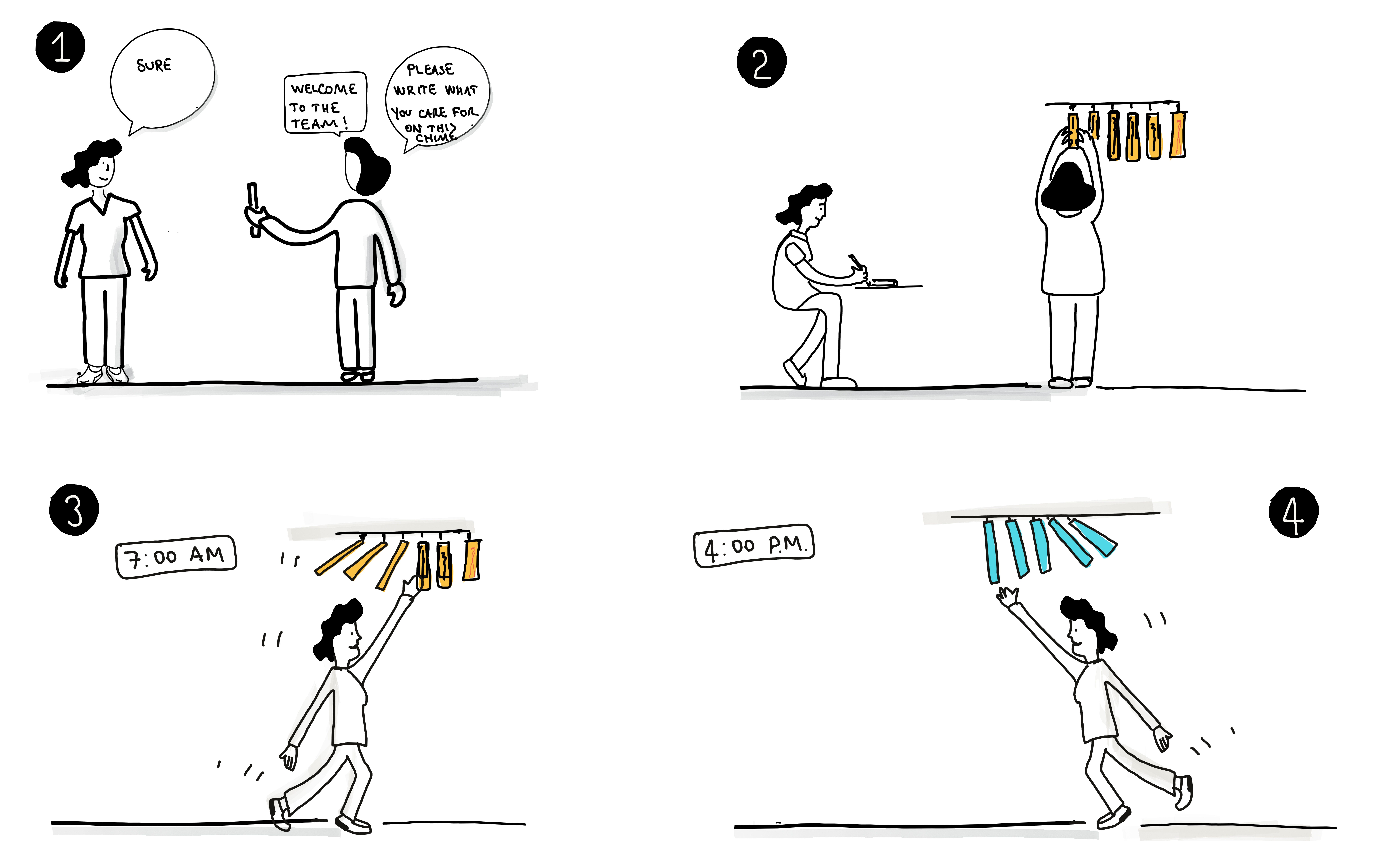
In the daily grind of work, it’s easy to become a cog in the machine and forget why you do what you do. This team created the Chime-in ritual with the intention to remind people of their values while they are beginning and finishing their shifts. They prototyped a chime with wrenches and elaborated on how-to onboard people to the ritual.
Ritual Flow
- When a new employee joins, they write their values on a chime tube and add to the team’s chime. And they are ready to chime in the next day.
- When they begin their shift, they check in with their card and chime in with a high pitch.
- When they leave their shift, they check out with the low pitch chime. It’s optional to chime in every day, however, it’s encouraged so that the individuals can signal that they are present.
That’s a Wrap Ritual for Anxiety & Shame

During the shift changes, two things happen. The physical environment gets quite messy after long hours of intense work. And the to-dos and patient workload spills over to the next shift. This usually triggers the feeling of shame for the off-going physician, and anxiety of workload for the incoming ones. To overcome these entangled emotions, this team created the That’s a Wrap ritual.
Ritual Flow
- The physician who is about to leave the shift welcomes the incoming doctors.
- They clean up space together, go through the patients’ to-dos.
- Then they mark the moment of hand-off by saying “That’s a Wrap!”
- The shift owners farewell the leaving physicians by banging the “Refresher buzz”
- Everyone claps the leaving physicians on way out. The new shift officially begins.
The Heroes Ritual For Recognition

Busy, loud and unfamiliar emergency rooms can be anxiety-inducing environments for children. Establishing a patient-doctor relationship is crucial but sometimes difficult in these environments. This team addresses this challenge with the intention to level the power dynamics between the two.
Ritual Flow
- The Heroes ritual starts with the doctor welcoming the child patient and offering hero stickers to pick from.
- Once the child picks the sticker, they celebrate it with a gesture from the hero and go about the treatment.
- After the patient-encounter, the doctor brings in more stickers, which are the medals of achievement.
- This time, the child picks a medal and puts the medal on the doctor’s scrub.
- This two-way sharing helps both the kid and the doctor feel they are mutually recognized.
The It’s-All-Yours Ritual

Shifts are long and tiring. Close to the end, when the incoming doctor comes in, the off-going doctor is busy with charting on a computer. Their interaction oftentimes feels mechanical. It happens by looking at a screen together, one person sitting in front, the other looking over the shoulder. To address this challenge, the team created a ritual to encourage face-to-face interaction and expressing gratitude.
Ritual Flow
- When the incoming doctor enters the space, they greet each other and get together around a circle facing each other.
- They talk about each patient’s status, pointing out the big monitor. Part of the monitor shows the messages from patients and the overall achievements of the past shift.
- The incoming doctor recognizes the achievements of the shift (patients covered, comments received)and celebrates with her peers.
- When they are done going over patients’ status, she asks “Can I take the board now?” The leaving doctor shouts “It’s all yours!”
- Then they tap their hands together on the table and mark the shift-change.
3 Learnings from Well-being Rituals
Reflecting back, we discovered several learnings from the rituals that students designed and the conversations we had.
Learning 1: Rituals can address burnout by managing relationships
The well-being rituals designed by our teams are mostly about managing relationships. Intentions vary from creating psychological safety to leveling power dynamics between people. Teams designed ritual flows to build and rejuvenate interpersonal relationships. That’s-A-Wrap and It’s-All-Yours rituals, for instance, help team members to recognize the tensions and overcome them with more face-to-face open interactions. This increase in positive interactions in return potentially could address the symptoms of burnout such as exhaustion, cynicism, and stress.
Learning 2: Rituals can alleviate anxiety and distress by channeling emotional energy
The other pattern that we observed is the channeling of emotional energy. There’s past research showing that rituals help regulate emotions. It’s even more relevant in the workplace where the emotions can get in the way of well-being. The It’s-All-Yours ritual, for instance, helps the team members to process the emotions together and release the emotional energy through symbolic phrases and acts.
Learning 3: Transition moments are critical for shifting culture towards well-being
As we mapped the day-in-the-life of emergency room employees, we discovered that transition moments such as shift-change and hand-off define the tone of the experience on that day for the person and the team. Addressing those moments has the potential to shift the culture towards more well-being in the workplace. The Blitz ritual, for instance, gives a chance for the person to reset if the shift is tough and emotionally difficult.
This is a piece recently published at d.school’s Medium publication.
